Here’s the frog-adorned image which appeared on Google on 29 February 2012. It marked the 220th birth anniversary of Gioachino Rossini, one of the greatest composers of the 19th century who has often been called “the Italian Mozart”. He was born only three months after Mozart’s death, on the leap day of a bissextile year.
.
The funny and colourful logo has obviously been inspired by The Barber of Seville , one of Rossini’s most popular operas based on Le Barbier de Séville, a famous comic play written in the 18th century by the French playwright Pierre Beaumarchais. On the right of the image we can recognize Figaro, the mischievous Barber of Seville who is busy shaving a character who doesn’t seem particularly happy to be on the barber’s seat and whom we suppose to be Bartolo, Rosina’s jealous guardian who wants to marry her. On the left of the image we can see a loving duo: Rosina who is singing a song with much passion is accompanied by a smiling pianist who must be Count Almaviva aka Lindor in love with Rosina. I’ve always been impressed by the art of giving life and expression to a simple drawing!
Give me a laundry-list and I’ll set it to music.
(Gioachino Rossini)
Gioachino Antonio Rossini, nicknamed “the swan of Pesaro”, was born into a family of musicians in Pesaro, a little town situated on the Adriatic coast of Italy. His father was a horn player and his mother an opera singer. One of the greatest composers of the 19 th century, Rossini is mainly known for his operas but he also composed a great number of musical pieces in all genres : sacred music, chamber music, songs, instrumental and piano pieces.
If you try to make abstraction of the big modern buildings you can see on the seafront, you’ll get an image of what this nice little town must have looked at the time of Rossini’s birth. In the sixties, I spent an enchanting month-holiday at Milano Maritima, on the Adriatic coast, not far from Pesaro, and I visited the region. It’s certainly one of the most beautiful regions of Italy.
Born in Pesaro, Gioachino Rossini never forgot his native town to which, at his death, he bequeated his entire estate. The no negligible amount of money which came from it was used, among other things, to establish the town’s Conservatory.
It is not in Pesaro but in Bologna that Rossini spent most of his youth for in 1799, as the boy was only seven, his father who had openly shown sympathies for the French Revolution and Napoleon Bonaparte was sent to prison where he remained until 1800. Gioachino’s mother took the child with her in Bologna where she had found a work as a leading singer in the local theatres. The boy was often left to the care of his grand-mother and friends of the family when she was working. His father would join them later when he got out of prison. Gioachino was a very gifted and precocious child endowed with a strong character and a great and sometimes quite derisive sense of humour.
There is a little piece of instrumental music that I like particularly and which was written by Rossini in 1806, when he was only 14. It is the Sonate a quattro – No. 1 in G Major which belongs to a series of sonatas written during a holiday in Ravenne, at the home of his protector Agostino Triosi, a bass player. It is said that young Rossini composed six sonatas in three days. He would say later that the original manuscript containing the sonatas was only worth to wrap salami ,-)
Gioachino entered the Liceo Musicale of Bologna as a cello student under the authority of father Stanislao Mattei but he preferred to spend hours studying Haydn and Mozart rather than to devote his time to more academic education. He used to say that he learned more in the company of the great musicians than with father Mattei. Among his favourite composers we can also mention Chopin and Beethoven whom he would meet in 1822, too late we should say for the great man was in a very bad state of health at that time.
At this early age Rossini composed two symphonies and two operas. In 1810, La Cabmiale di matrimonio was produced in Venice. Rossini was only 18 then.
By the age of 21 Rossini had become a star in Italy and he had already composed ten operas.
In 1822 Rossini married Isabella Colbran, a Spanish opera singer who played a leading part in Rossini’s Elisabetta, regina d’Inghilterra. They would separate in 1837 and she died in 1845. In 1846 he married Olympe Pélissier, a French artists’ model who had sat for Vernet’s picture Judith and Holofernes. She would survive him ten years.

Magie de L'Italie collection CD musique Instants Classiques
Pesora, Bologna, Ravenne, Naples, Venice, Ferrara, Milan, Rome… to produce his operas, Rossini travelled from town to town all over the country…

Ouverture de grands opéras collection CD musique Instants Classiques
Here are some of his most popular operas :
The Barber of Seville (Il barbiere di Siviglia) after Beaumarchais’s play Le Barbier de Séville : first produced in Rome. The impresario of Teatro Argentina offered to Rossini the libretto of Le Barbier de Séville which had already put into music by Giovanni Paisello to mention only this composer. It is said that Rossini composed the music in fourteen days. It was first entitled “Almaviva” and after a bad beginning it became rapidly extremely popular. Soon Rossini would give up composing opera buffa to devote to opera seria.
La Cenerentola (after Cinderella – Cendrillon)
Il viaggio a Reims, ossia L’albergo del Giglio d’Oro
La gazza ladra (The Thieving Magpie – La Pie voleuse)
http://www.youtube.com/watch?v=qdm8IfInaJg
L’Italiana in Algeri
Moïse et Pharaon : a French-language epic.
Guillaume Tell (William Tell) : Rossini’s last opera very famous for its overture.
On Wikipedia there is a very interesting and detailed list of the operas composed by Rossini.
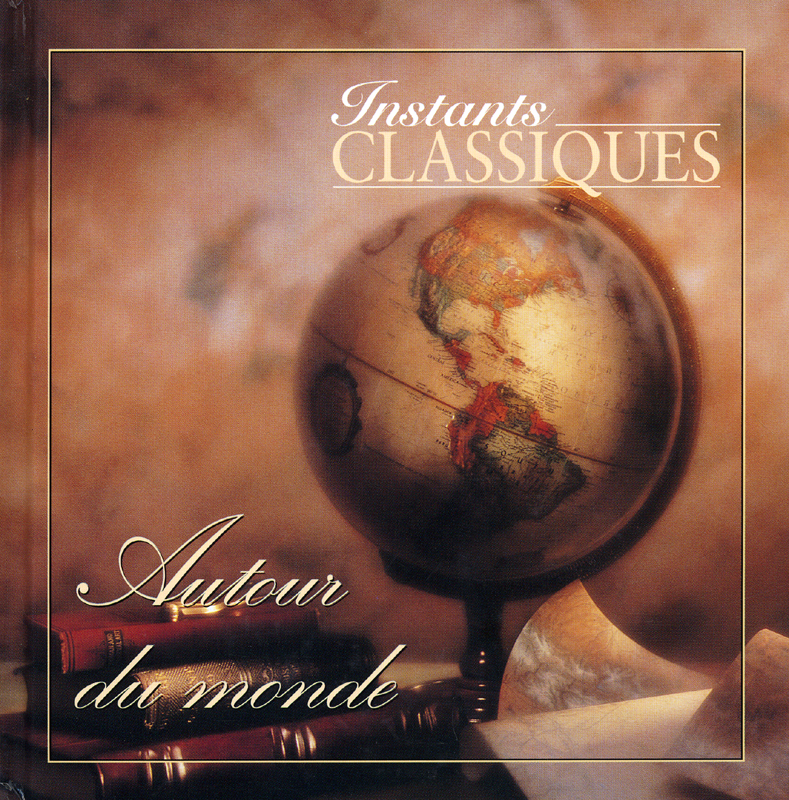
Autour du monde collection CD musique Instants Classiques
Until his long retirement in Paris from 1848 to his death in 1868, Rossini who had travelled all over Italy now turned to other countries in Europe, especially in Austria but in France principally where he had first settled from 1825 to 1829. He lived in Paris, in an apartment at 2 Chaussée d’Antin and in summer time in his villa of Passy.
Rossini also spent some time in Vienne where he met Beethoven and in London where his opera La figlia dell’ aria was quite successful and drew the attention of George IV to whom Rossini was introduced.
After his stay in London, Rossini settled in Paris where he had also become very popular. In 1824 he became the musical director of the Théâtre des Italiens and Charles X gave him a very interesting contract: he would produce five new operas a year and after expiration of the contract he would be given a generous pension for life.
In 1825 he composed Il Viaggio a Reims for the coronation of Charles X.
In 1829 he wrote William Tell, his last opera, but his luck turned and he had to leave France because of political turmoil. In 1830 the July revolution broke out and the French King Charles X was compelled to abdicate which put into question Rossini’s contract and pension.
He finally returned to Bologna, staying there for several years, and then to Florence where he lived in a house belonging to prince Domidoff, villa San Donato. In 1848 he returned to Paris where he remained until his death in Passy, on 13 november 1868.
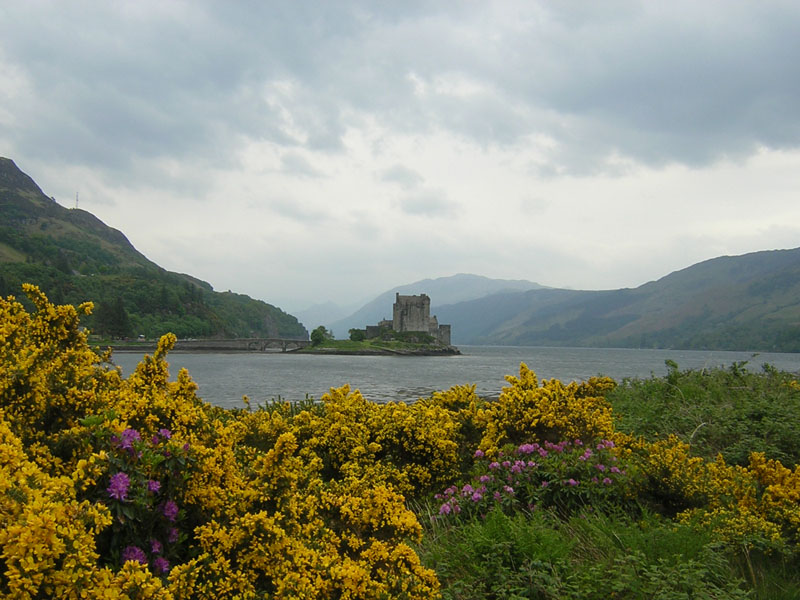
Eilean Donan Castle North West Highlands Scotland © 2004 Scotiana
I’m not sure Rossini travelled up to Scotland when he went to London but what is sure is that the Scottish landscapes and literature (more especially Walter Scott’s poems and novels) were a favourite source of inspiration for him. He composed three operas linked with Scotland: La donna del lago (1819), Ivanhoe (1826) and Robert Bruce (1846).
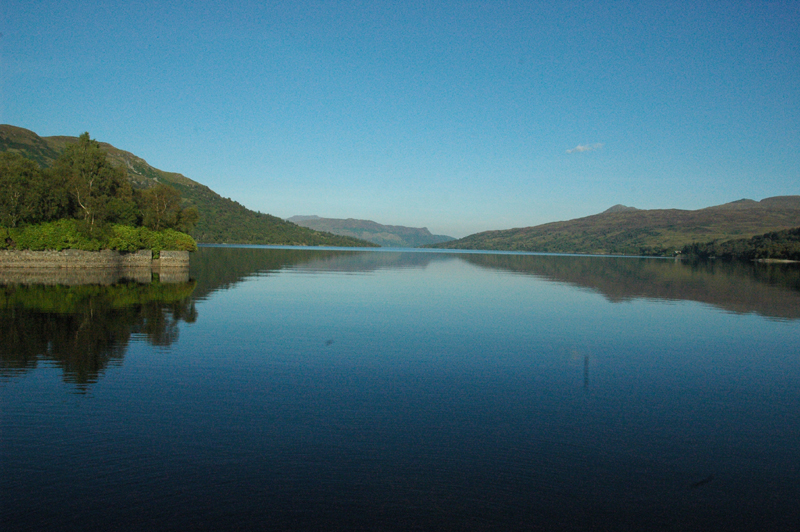
Loch Katrine Trossachs Scotland © 2007 Scotiana
No wonder Scotland, with its breathtaking landscapes and turbulent history, be a privileged source of inspiration for artists like Rossini… and indeed there have been many others, especially in the Romantic period and not only musicians but also writers and painters…
Here’s a picture which perfectly illustrates the kind of painting which flourished in the romantic period… the Trossachs with loch Lomond and loch Katrine were among the favourite Scottish subjects for painters.
“Looking down over Loch Katrine the painting is full of lovely little touches such as the birch on the right snapped off by the wind. It is neatly monogrammed and dated on the rock below the deer, and could so easily have been an over Victorianised subject, but avoids that by its sheer beauty.” (James Alder – Fine Art Gallery)
and another one by a different artist:
Now let us turn to Rossini’s Scottish operas:
La donna del lago
With Rossini’s La Donna Del Lago (1819), Walter Scott makes his entrance on the stage of Italian opera. His melodramma adapts Scott’s long poem The Lady of the Lake (1810), a true Scottish epic that describes King James V’s rivalry with both Borderers and Highlanders. The composer’s librettist, Andrea Leone Tottola, bases his dramatisation on a French translation of the poem, simplifies and rewrites the text, as is often customary when adapting literature for the stage, thus modifying characters and highlighting the poem’s love interest. If the libretto is unfaithful to the letter of the source, the music pays homage to its spirit and conveys the heroic and legendary aspect of the drama with an extended, inventive and attentive orchestration, thus indicating a decisive step in the “Rossinian Revolution” with the development of a pastoral style, one of the bases of Romantic opera.
Source: http://lisa.revues.org/4483
For inspiration, musicians [of the Romantic era] began turning to tales of dark and stormy places — places like Scotland (…) some of Europe’s finest composers were seduced both by the Scottish landscape, with its rocky coastlines and windswept highlands, and by its literature. Felix Mendelssohn made a famous visit to the Scottish Hebrides islands, resulting in his brooding overture Fingal’s Cave.”Franz Schubert wrote songs using Scottish poetry — including his famous Ave Maria, a setting of a poem by Sir Walter Scott. Hector Berlioz wrote an overture inspired by Scott’s novel Rob Roy.
But the taste for all things Scottish may have taken its strongest hold in Italy’s opera houses, especially when it comes to the novels and poetry of Walter Scott. Rossini wrote his opera La Donna del Lago in 1819, basing it on Scott’s narrative poem The Lady of the Lake — and it launched a sort of Scott mania. Over the next two decades or so, Scott-based operas turned up at a rate of more than one each year. Giovanni Pacini wrote two of them, The Talisman in 1829 and Ivanhoe in 1832, and Gaetano Donizetti followed in 1835 with Lucia di Lammermoor, based on Scott’s The Bride of Lammermoor. (World of opera)
Robert Bruce
http://www.youtube.com/watch?v=KbCM8a6F0k0
Ivanhoe
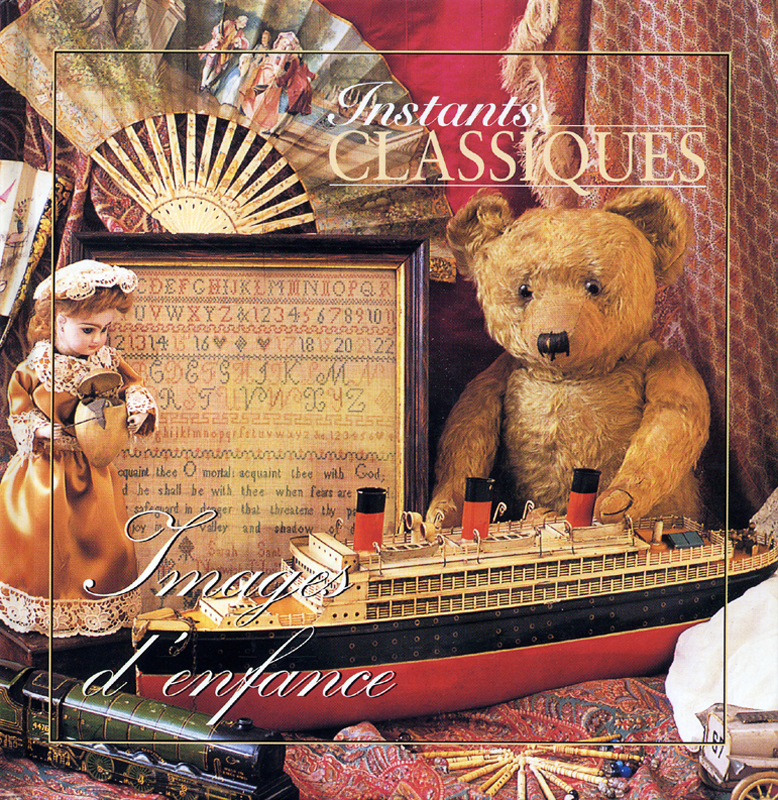
Images d'enfance collection CD musique Instants Classiques
Rossini had begun to compose music at a very early age and in 25 years he produced most of his major works. But when he retired at the age of about 38 he didn’t stop composing music. But this time he composed for his own pleasure and for his family and friends. He indulged in what he called “Sins of Old Age”…
In Gioachino Rossini’s Péchés de vieillesse (Sins of Old Age), the opera composer gathered together 150 vocal and solo piano pieces into fourteen unpublished albums, under his self-deprecating and ironic title. The grouping of pieces in albums do not reflect the sequence or the dates of their composition, which ranged from 1857 to shortly before his death in 1868. The title Péchés de vieillesse was given by Rossini only to volumes V-IX, but it has since been extended to the complete set.
The Péchés de vieillesse are salon music, though of a refined order, meant to be performed in the privacy of Rossini’s drawing room at Passy. Volumes I, II, III and XI are vocal music to piano accompaniment. Volumes IV, V, VI, VII, VIII, X and XII are music for solo piano. Volume IX is for chamber ensemble or solo piano. Volumes XIII and XIV comprise vocal and non-vocal music.
Vol I Album italiano
Vol II Album français
Vol III Morceaux réservés
Vol IV Quatre hors d’œuvres et quatre mendiants
Vol V Album pour les enfants adolescents
Vol VI Album pour les enfants dégourdis
Vol VII Album de chaumière
Vol VIII Album de château
Vol IX Album pour piano, violon, violoncello, harmonium et cor
Vol X Miscellanée pour piano
Vol XI Miscellanée de musique vocale
Vol XII Quelques riens pour album
Vol XIII Musique anodine (1857). Presented to his wife Olympe in gratitude for her care during his long intermittent illness.
Vol XIV Altri Péchés de vieillesseSource: http://en.wikipedia.org/wiki/P%C3%A9ch%C3%A9s_de_vieillesse
Aren’t the titles of these later musical pieces quite attractive. I feel like listening to all of them 😉
For those who want to know more about Rossini there is a very detailed list of Rossini’s compositions on Wikipedia :
Personally, I will try to find La vie de Rossini by Stendhal, published in 1824 when Rossini was 32 and Stendhal 41.
I would like to share with you another of my favourite musical pieces. It is entitled La boutique fantasque though it includes several pieces of instrumental music taken from Rossini’s Soirées musicales (1835). The title seems to have been given by Ottorino Respighi (1879-1936), who remained Rossini’s orchestrator until 1923. The music was to be used as a musical background for a ballet called La boutique fantasque. The story behind this ballet takes place in the south of France in the 1860s. A shopkeeper and his apprentice decide to open their shop which is reputed for its mechanical dolls. Customers arrive, among them Americans, and two Italian dolls begin to dance a tarantella, followed by four dancers disguised as playing cards who dance a mazurka. Then arrives a group of Russian customers and Cossack dancers are introduced in the game followed by two poodles and finally French cancan dancers. The Americans decide to buy the toy boy and the Russians the toy girl, but when they come back the day after to fetch them the two dolls have disappeared and all the other dolls of the shop set off furiously in pursuit of the American and Russian buyers, celebrating thereafter the happy end 😉
If you want to make a pilgrimage to Rossini’s grave you may be careful to choose the right place when you plan your journey for, as you can see on the above photos, there are TWO graves. One itinerary will lead you to Paris and the other one to Florence. In fact, when Rossini died in Paris, in 1868, he was buried at Cimetière du Père Lachaise but, in 1887, at the request of the Italian government, his remains were moved to the Basilica di Santa Croce in Florence… both graves are worth the visit anyway (Paris and Florence too) but if I had to choose my favourite one I would give preference to the grave in Cimetière du Père Lachaise and it is here that his wife Olympe must have come to put flowers for ten years 😉
Let us end on the grave notes of La petite messe solennelle…
Look ! Two frogs have escaped and they’re playing leapfrog on the google doodle with its extra “O” (for the bissextile year) 😉 In French we would say “jouer à saute-mouton” …
Dear Janice would you, by any chance, be aware of any other Google Doodle related to Scotland ? …
In the meantime, dear readers, enjoy the music !
A bientôt.
Mairiuna.


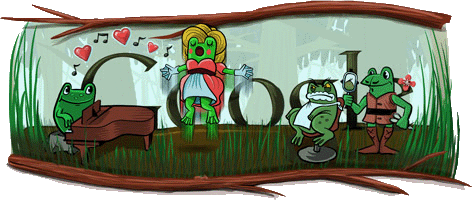



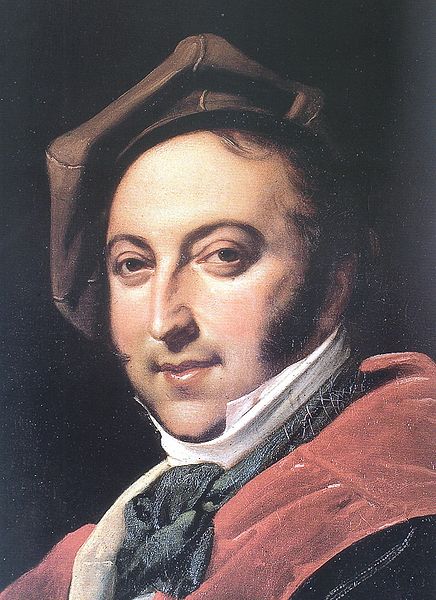
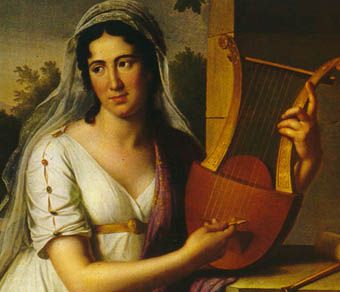






Leave a Reply